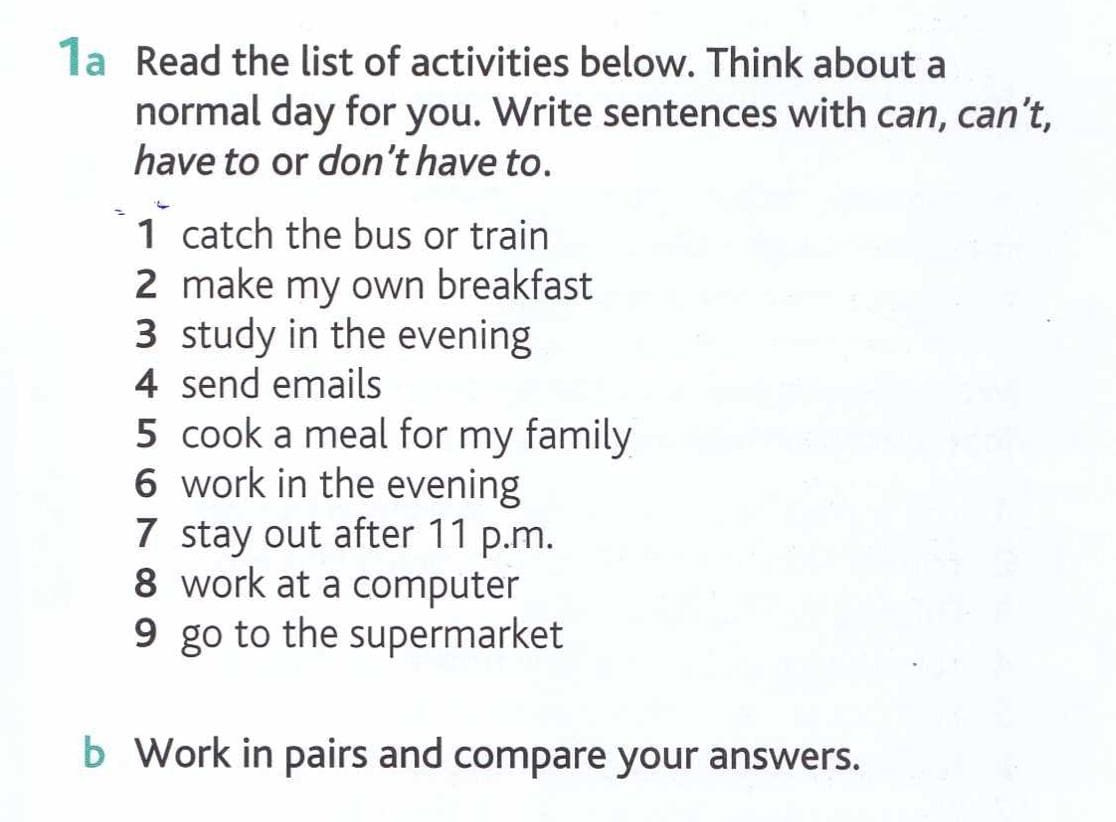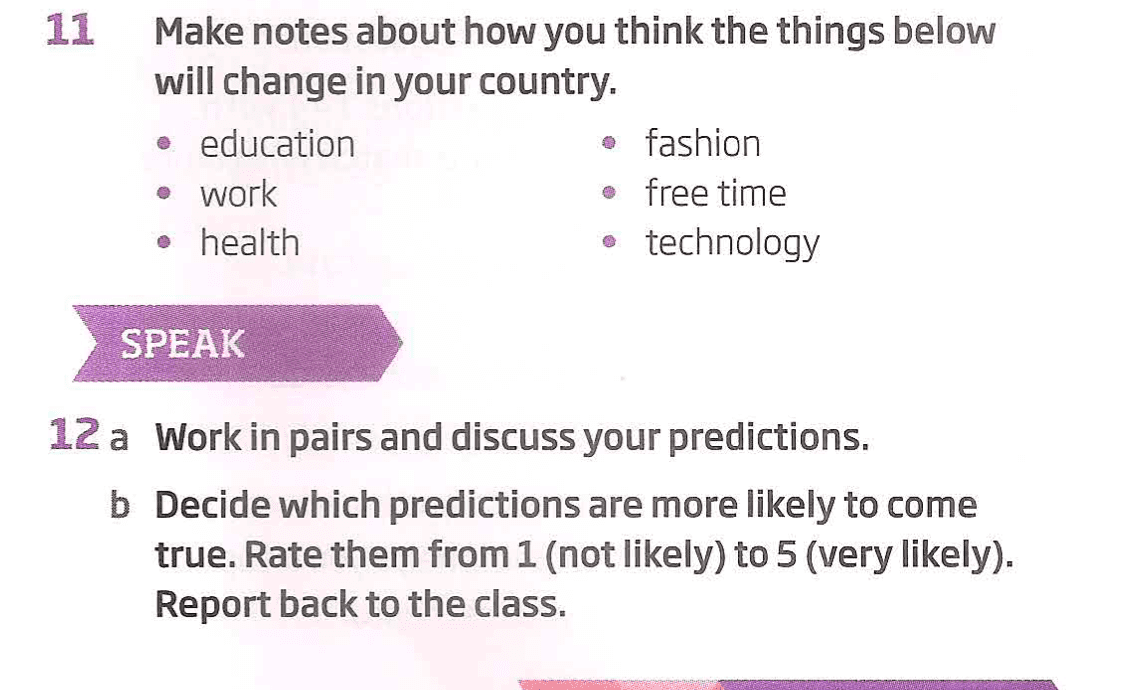5 things to do before the start of the new school year
- Activities
- Tips & Strategies
- Methodology

05.10.2022
Among the variety of modern language teaching methods teachers often choose Task-based learning (TBL). TBL offers an alternative to a conventional PPP approach to structuring, planning, and implementing lessons, and is considered more effective by many colleagues.
What is special about this approach to teaching languages? What do we call a 'task'? What are the typical tasks teachers use in their lessons?
Most teachers use a traditional lesson structure – PPP which stands for Presentation, Practice, Production. In this model, a teacher presents the target language to students in the context first, then students practise using the language in a restricted context by doing controlled practice activities, and finally, they produce the target language during the freer practice stage.
Unlike PPP, in a TBL lesson framework, a teacher does not pre-determine what language to teach. Students complete the task around which the lesson is built, and the target language is determined by what happens as they do it. Usually completing a task gets students engaged in using English naturally and involves collaboration.
A typical TBL lesson has such stages:
Pre-task. At this stage, a teacher engages the students, sets expectations about the task, and gives instructions.
Task. Students complete the task in pairs or groups, and a teacher monitors and provides support if necessary. Next, students prepare and plan how they are going to report the outcome of the task to the whole class. Finally, students report the outcome of their task. A teacher can provide feedback on their performance.
Language Focus. Students analyse and study the language connected with the topic of their task (a source can be different, e.g. a listening script, a reading text) and practise using it in a given context.
We look at each stage in more detail in our online course.
Task-Based Learning
Online course for English teachers
That is the question because often teachers confuse it with an 'exercise'. Let's look at what the task is and how it is different from the exercises we give our students.
According to the Longman Dictionary of Applied Linguistics, 'a task is any activity or action which is carried out as the result of processing or understanding language (i.e., as a response) — for example, drawing a map while listening to the recording, listening to an instruction and performing a command’ (Richards, P. & H. Weber 1985: 289).
According to the authors, tasks provide a purpose for the activity; they do not practice language for its own sake.
A similar interpretation of tasks is given by Skehan, P. who describes tasks as ‘activities which have the meaning as their primary focus. Success in the task is evaluated in terms of achievement of an outcome, and tasks generally bear some resemblance to real-life language use’ (Skehan 1996: 20).
The value of tasks according to the authors is their similarity to the things people do in everyday life. This similarity is based on the fact that every task must have an outcome.
Willis, J, stated the same ideas. She suggests that a task is ‘a goal-oriented activity in which learners use language to achieve a real outcome’ (Willis 1996: 53). This is what is meant by a task in TBL.
Rod Ellis, a British linguist, defines a task (for TBL) as a language-teaching activity that must satisfy four criteria:
Now let's have a look at an example of the activity a teacher gives to the students and decide whether it is a task or not according to the mentioned above.

Cutting Edge, Pre-Intermediate, Student Book, 3rd edition, p. 27
Does this activity focus on message making?
Do students have to exchange some information or their opinions?
Is the language necessary for completing this activity provided?
Does this activity have a communicative purpose?
Now, look at one more activity, and using the criteria above, decide whether it is a task.

Roadmap B1, Student Book, p.11
The primary focus for students here is on trying to communicate. There is an opinion gap – they have to share their predictions, decide which of them are likely to come true, and rate them. The language necessary for completing this task is not provided. There is no specific vocabulary or grammar students have to use. The activity will be a success if students make a decision and report it to the class. Does this mean that this activity can be used as a task? The answer is 'yes'.
Let's summarise the main differences between the task (in TBL) and an exercise:
| Task | Exercise |
| Focuses on meaning | Focuses on accuracy |
| Has a gap | Has no gap |
| Students use their own linguistic and non-linguistic resources | Language necessary for completing the activity is provided by a teacher or in a coursebook, and students manipulate it in some way |
| Successful if there is a communicative outcome | Successful if students use language correctly |
Basically, there are six types of activities that can be effectively used as tasks in a TBL lesson. They are:
In our course, we look at them in more depth, but let's briefly describe what each of the tasks involves.
Listing task. Students come up with a particular list of things. The outcome of such a task can be a mind-map or any other visual representation, such as tables, charts, or timelines. This type of task is sometimes called 'brainstorming'.
For example:
You are going to make a bucket list. First, discuss bucket list ideas. Think about the following:
Work in pairs / groups. Share ideas for your bucket lists. Agree on a list of 5 most interesting things and give at least one reason for doing it. (Adapted from Roadmap B1, SB, p.23)
Ordering and sorting tasks. Students list, and put things in the correct order, or rank things according to some criteria. The outcomes of ordering and sorting tasks can be a mind-map or any other visual representation, such as tables, charts or timelines.
For example:
Work in groups. Choose a product or service. Think of some popular brands for that product or service. Compare the brands you have chose. Put them in order from best to worst (1=best). Think about:
Matching task. Students can match captions / texts / recorded extracts to pictures, short notes, or headlines to longer texts, e.g. news items, etc.
For example:
Look at the photos. Make guesses about the people. Read the facts about the people and match them with the pictures. Talk to your partner. How close were your guesses? Discuss how you were able to match them. Prepare to tell the class how you did it.
Comparing. Students compare different things, they can find similarities and differences, find things in common, or spot differences.
For example:
You are going to plan and discuss your own lifemap. Think of your likes, dislikes, goals and plans. Look at the topics and make notes:
Work in pairs. Tell your partner about your life map. How different or the same are your life maps? What has surprised you the most in your partner's life map? (Adapted from Roadmap B1, SB, p.9)
Problem-solving task. Students are presented with a problem and come up with a solution.
For example:
Think of a town centre where there is too much traffic. In pairs, think of three alternative solutions to this problem. List the advantages and disadvantages of each alternative. Then decide which alternative would be the cheapest one, the most innovative one and the most environmentally friendly one. Report your decisions to another pair / group / the class, and discuss with them which solution would be the best one to put forward to the local government. ( taken from Six Types of Tasks for TBL, Jane Willis)
Sharing personal experiences (and storytelling). Such activities provide learners with opportunities to speak for longer and in a more sustained way. And it is something people often do in real life.
For example:
Work in pairs. Talk about what has been happening in your lives recently. Talk about:
Decide who has been doing the most interesting things. (Adapted from Roadmap B1, SB, p.25)
If you are interested in implementing TBL approach in your teaching, our online course will show you how you can exploit textbook material to help structure a task sequence, incorporating pre-task activities, and a task cycle, leading on to language focus and form-focused work. You will also see what the teacher and students do at every stage of the lesson during an online class the recording of which is included in the course.
Yulia Chorna
Author
DELTA Module 1, CELTA certified teacher of General & Business English
Comments
Leave your comment